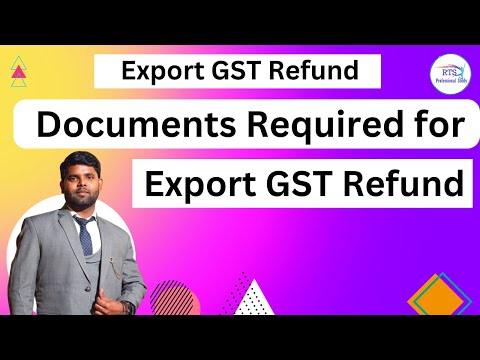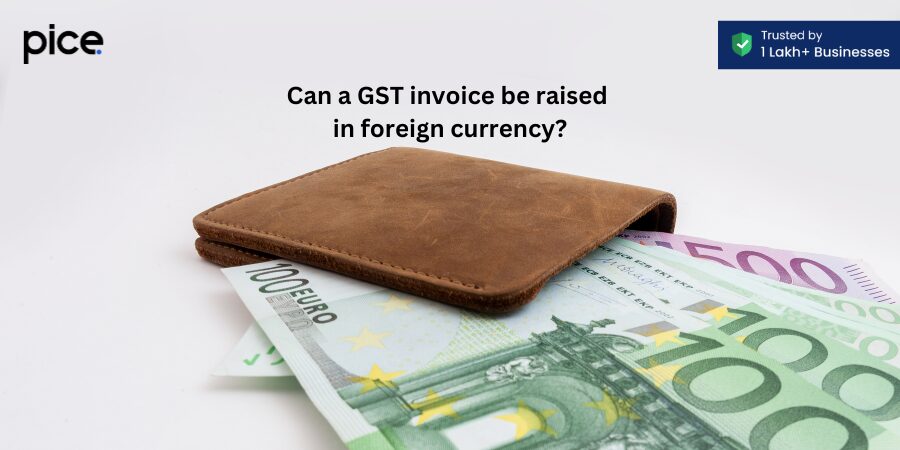Key takeaway
- GST in India is a destination-based, multi-stage tax on value addition that replaces multiple indirect taxes, streamlining the tax structure.
- Export GST rate in India is set at 0%, classifying exports as zero-rated supplies, enabling exporters to claim refunds on input taxes.
- Deemed exports, treated similarly to physical exports under GST, allow for tax benefits on specified transactions within India.
- To claim GST refunds on exports, essential documents include GST invoices, shipping bills, bank realization certificates, and GST returns.
- The Merchant Export Scheme allows procurement of goods at a concessional GST rate of 0.1% for exports, enhancing the competitiveness of Indian exports.
Introduction
India’s introduction of the Goods and Services Tax (GST) was a huge step forward in making taxes simpler, making it easier to do business, and making the economy more competitive around the world. It is very important for Indian exporters (Registered person) to understand the details of GST, such as the export GST rate, deemed exports, and how to collect refunds and Input Tax Credit (ITC). This blog post tries to clear up these issues and provide a clear path for exporters to follow when dealing with GST.
What is GST?
Goods and Services Tax is what GST stands for. It’s a broad, multi-stage, destination-based tax that is put on everything that adds value along the supply chain. GST replaced many indirect taxes that the national and state governments used to charge, like excise duty, VAT (Value Added Tax), service tax, and others. It was made to simplify the complicated tax system and create a single market within a country.
Key Features of GST
- Multi-Stage: GST is imposed at every step in the production process but is meant to be refunded to all parties in the various stages of production other than the final consumer.
- Value Addition: GST is levied on the value additions at each stage of the supply of service, from manufacturing to the point of sale to the end consumer.
- Destination-Based: Unlike the previous taxes that were origin-based, GST is a destination-based tax. This means that the tax is collected by the state where the goods are consumed and not by the state where such goods are manufactured.
Export GST Rate in India

The Goods and Services Tax (GST) system in India was made to help exports and make the country more competitive on the world market. In India, the GST rate on exports is set to zero percent. This means that goods and services shipped from India are not subject to GST. This helps Indian exporters make their goods more marketable abroad while keeping the prices low enough to compete.
Deemed Exports
There are some types of transactions that happen in India that are still considered exports even though the things don’t leave the country. These are called “deemed exports.” The goal of labeling some transactions as “deemed exports” is to provide benefits similar to those offered to regular exports, mainly to boost the supply of goods that are either made in India or used to meet export responsibilities. Things that are sent to Export Oriented Units (EOUs), projects funded by the UN or other foreign groups, and Special Economic Zones (SEZs) are all examples of deemed exports.
Documents Required for Claiming Refund on Exports
Exporters in India need to furnish specific documents to claim a refund on the GST paid for goods and services that are exported. The process is streamlined to ensure that exporters can recover their funds efficiently. The key documents required include:
- GST Invoice: A tax invoice that details the description, quantity, value of goods/services, tax charged, and other mandatory fields as prescribed under the GST law.
- Shipping Bill/Bill of Export: This is required for the export of goods and acts as a key document for customs clearance. It includes details such as the name of the vessel/flight, port of destination, country of destination, and FOB (Free on Board) value.
- Bank Realization Certificate (BRC) or Foreign Inward Remittance Certificate (FIRC): These documents serve as proof that the exporter has received payment in foreign currency, which is essential for the refund process.
- Export General Manifest (EGM): Filed by the carrier (ship/airline) with the customs authorities, it provides details about the shipped goods. The EGM is crucial for proving the export of goods outside India.
- GST Returns: Exporters (Registered Person) must file regular GST returns, such as GSTR-1 (details of outward supplies) and GSTR-3B (summary of outward supplies and input tax credit claimed), which include details of exports and payment of tax.
- LUT (Letter of Undertaking) or Bond: If the exporter wishes to export of service and goods without paying IGST, they must furnish an LUT or bond, as applicable. This is a declaration that they will fulfill all GST compliance requirements related to exports.
The process of claiming a GST refund is designed to be efficient, with the government typically processing refunds within a stipulated time frame after the submission of all required documents. Exporters must ensure that all documents are accurately prepared and submitted to avoid delays in the refund process.
What is IGST?
IGST stands for “Integrated Goods and Services Tax.” It is a part of India’s Goods and Services Tax (GST) system. Along with the Central Goods and Services Tax (CGST) and the State Goods and Services Tax (SGST), it is one of the three types of taxes that make up the GST. IGST is charged on taxed goods and services that are sent from one state to another (inter-state transactions) and on goods that are brought into India.
The main reason for IGST was to make sure that tax credits could easily move from one state to another and to connect the whole country into one market. In a federal system like India’s, where both the Central Government and the State Governments can tax and collect, the IGST concept works especially well. The IGST money is split evenly between the Central Government and the State Governments, as decided by the GST Council. This makes sure that the tax money is distributed fairly.
Steps to Claim IGST Refund
Step 1: File Shipping Bill: File the shipping bill at the time of export, including GSTIN, invoice details, and the IGST amount paid.
Step 2: Furnish Export Details in GSTR-3B: Declare the details of the exports and the amount of IGST paid on such exports in the monthly return filed in Form GSTR-3B.
Step 3: File GSTR-1: Provide details of the tax for export, including the shipping bill number, date of shipping bill, and port code, in the GSTR-1 form for the corresponding tax period.
Step 4: Realize Export Proceeds: Ensure the export proceeds are realized within the time prescribed by the Foreign Exchange Management Act (FEMA), which is crucial for the refund claim.
Step 5: Automated Application for Refund Process: The GST Network (GSTN) processes the application for refund claims based on the details furnished in GSTR-1 and GSTR-3B, matched with the shipping bill details filed with customs. The refund is directly credited to the exporter’s bank account.
What is ITC?
ITC, or Input Tax Credit, is a mechanism within the Goods and Services Tax (GST) framework that allows businesses to reduce the amount of tax they owe on their sales (output tax) by the amount of tax they have paid on their purchases (input tax). Essentially, it prevents the cascading effect of taxes, where tax is paid on tax, throughout the supply chain. When a business buys a product or input service, they pay tax on the purchase, which is essentially the credit of input tax.
If the business later sells the product or service, they collect tax from their customer. The ITC allows the business to deduct the credit of input tax they’ve already paid on their inputs from the tax they are supposed to deposit with the government on their outputs. This ensures that the final consumer bears the GST charged by the last dealer in the supply chain, with all previous payment of tax being available as a setoff, making the GST a consumption-based tax.
Documents Required to Claim ITC on Exports

To claim ITC on exports, businesses need to furnish specific documents as part of their GST filings. These documents serve as proof of payment of tax on inputs and are essential for the smooth processing of ITC claims. The key documents required include:
- GST Invoices from Registered Suppliers: For goods and input services purchased, which should detail the GST paid. These invoices are the primary documents needed for claiming ITC.
- Bill of Entry: In case of imports, the bill of entry serves as proof of payment of IGST on imported goods, which is eligible for ITC.
- Export Invoices: These are necessary to establish the link between the inputs used and the exported goods or services. Export invoices should detail the GSTIN of the registered supplier, description of goods or services, HSN code, and the tax charged.
- Shipping Bill/Bill of Export: Required for goods exported out of India, the shipping bill or bill of export is crucial for claiming refunds of the IGST paid on exported goods. It corroborates the export of goods and the IGST payment details.
- GSTR-1: This return form contains details of outward supplies. Exporters need to furnish details of exports in GSTR-1, which is used to process ITC claims.
- GSTR-3B: This is a monthly summary return that includes details of input tax credit availed. Businesses must accurately report the ITC claimed in this form.
- Foreign Inward Remittance Certificate (FIRC) or Bank Realisation Certificate (BRC): For services exported, FIRC or BRC acts as proof of receipt of export proceeds in foreign currency, which is essential for claiming ITC on exported services.
- Letter of Undertaking (LUT): Businesses exporting goods or services without payment of IGST must furnish an LUT, which allows them to claim refund on ITC.
What is Merchant Export Scheme?
The Merchant Export Scheme is a provision under the Goods and Services Tax (GST) regime in India, designed to boost the country’s exports by providing certain tax benefits to merchant exporters. Merchant exporters are traders who buy goods from domestic suppliers and then export them. Unlike manufacturers who export goods they produce, merchant exporters do not engage in the manufacturing process themselves.
Under this scheme, merchant exporters can procure goods at a concessional rate of GST, significantly lower than the standard rates, on the condition that these goods will be exported. The primary aim of this scheme is to enhance the competitiveness of Indian goods in the international market by reducing the tax burden on exporters, thereby encouraging more exports.
Changes in GST Rate for Merchant Export Scheme

The GST rates that apply under the Merchant Export Scheme have been updated and changed many times since it started. This is to keep up with the changing economy and the needs of the export community. Most of the time, these changes are made to make taxes easier to understand, to make Indian exports more competitive, or to address the worries of people who export.
One of the most important parts of the plan is that merchant exporters can buy goods from other states at a nominal GST rate of 0.1% per purchase. This rate applies when producers sell goods to merchant exporters. This makes it much easier for exporters to manage their cash flow. It’s important to keep in mind, though, that the GST Council can decide to change the GST rates and rules under the Merchant Export Scheme.
The GST Council is the highest decision-making group for the GST system. It checks the tax rates and structures, including those under the Merchant Export Scheme, on a regular basis to make sure they are in line with the government’s goals to promote exports. If the GST rates or rules change under this plan, they are made public through notifications on the GST common portal and circulars sent out by the Central Board of Indirect Taxes and Customs (CBIC).
Businesses and people who export must keep up with the latest notices and changes to the Merchant Export Scheme in order to stay compliant and get the most out of the scheme’s benefits. With these kinds of programs, the Indian government hopes to make exporting easier, lower the cost of doing so, and raise the profile of Indian items around the world.
💡If you are looking for ways to pay your GST bill with credit card, then download Pice Business Payment App. Pice is a one stop app for all business payments.
FAQs
Is there GST on export?
No, exports are considered zero-rated supplies under the GST regime in India. This means that goods or services exported outside India are not subject to GST, allowing exporters to claim a refund on the input tax credit.
What is 0.1% GST on exports?
The 0.1% GST rate applies under the Merchant Export Scheme, where merchant exporters can procure goods from domestic suppliers at a concessional GST rate of 0.1%, provided these goods are to be exported. This scheme is designed to reduce the cost burden on exporters.
Does the government charge GST on exports?
No, GST is not charged on the value of exports. Exports are treated as zero-rated supplies, meaning that while the goods or services are exported without GST, exporters can still claim a refund for the tax paid on inputs used to manufacture these exported goods.
What is the GST rate for export freight?
The GST on export freight is also treated under the zero-rated supply category. This means that services related to the transportation of goods for export can be supplied without charging GST, and any GST paid on such services can be claimed back as a refund.
Do we add GST in export invoice?
While the export invoice should mention that the GST is zero-rated, the government does not charge GST on the exports. The invoice must clearly state that the goods or services are meant for export and are thus subject to a GST rate of 0%.
How can I export without duty?
Exporting goods from India is generally duty-free, as exports are zero-rated under the GST regime. To export without duty, ensure compliance with the GST regulations by filing the necessary returns, and if applicable, claim refunds on the input tax credit for taxes paid on inputs used in the manufacturing of exported goods. Additionally, ensure compliance with any specific documentation and procedural requirements set by the customs authorities to facilitate duty-free exports.
How do I apply for GST for export?
To apply for GST for export, ensure you’re registered under GST as an exporter, which can be done through the official GST portal. Once registered, you can opt for an LUT (Letter of Undertaking) if you wish to export goods or services without paying IGST. The LUT can be filed online through the GST portal under the services section.
How do I export data from GST portal?
To export data from the GST portal, log in to your account, navigate to the relevant section (like GSTR-1, GSTR-2A, etc.), where you’ll find the option to download or export the data. Choose the financial year and the tax period for which you need the data, and then click on the ‘Download’ or ‘Export’ button to save the information in a format such as Excel or PDF.








